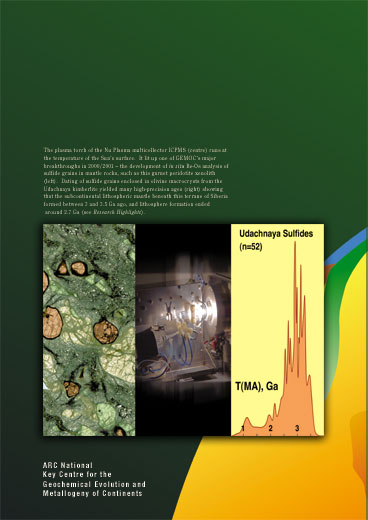Teaching and training program:
undergraduateGEMOC honours
GEMOC postgraduate Technology development program
Appendices

5. Funded research projects
6. Flowsheets for Courses in Geology and Geophysics
| Director's preface
Teaching and training program: undergraduateGEMOC honours GEMOC postgraduate Technology development program Appendices |

|
| 5. Funded research projects 6. Flowsheets for Courses in Geology and Geophysics |
Back Cover: The plasma torch of the Nu Plasma multicollector ICPMS (centre) runs at the temperature of the Sun's surface. It lit up one of GEMOC's major breakthroughs in 2000/2001 - the development of in situ Re-Os analysis of sulfide grains in mantle rocks, such as this garnet peridotite xenolith (left). Dating of sulfide grains enclosed in olivine macrocrysts from the Udachnaya kimberlite yielded many high-precision ages (right) showing that the subcontinental lithospheric mantle beneath this terrane of Siberia formed between 3 and 3.5 Ga ago, and lithosphere formation ended around 2.7 Ga (see Research Highlights). |
Annual Report Archive | GEMOC Home Page | Earth & Planetary Sciences Home Page